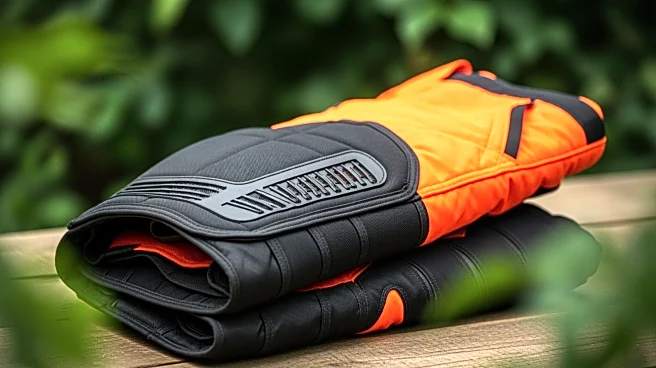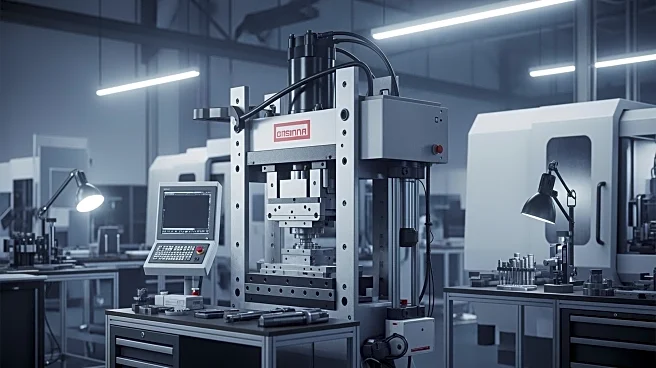What's Happening?
Solidur has introduced a new range of Class 3 chainsaw trousers designed for forestry and arborist professionals. These trousers are certified to EN ISO 11393-2 Class 3, providing protection against chainsaw chains traveling
at speeds of up to 28 meters per second. The trousers feature lightweight multi-layer protective fabric, reinforced high-wear zones, and a water- and oil-repellent outer shell. They also include stretch panels and ventilation zones for comfort during extended use. The launch underscores Solidur's commitment to safety, ensuring compliance with safety regulations while meeting performance expectations.
Why It's Important?
The introduction of Solidur's Class 3 chainsaw trousers is significant for the forestry industry, where safety is paramount due to the high-risk nature of the work. By providing enhanced protection against high-speed chainsaw chains, these trousers help reduce the risk of injury for professionals. This development is likely to influence safety standards and equipment choices within the industry, potentially leading to increased adoption of high-standard protective gear. Companies and workers stand to benefit from improved safety measures, which can lead to fewer accidents and enhanced productivity.
What's Next?
Solidur's new trousers are available through Severnside Safety and selected dealers, indicating a strategic distribution plan to ensure accessibility to professionals nationwide. As the industry continues to prioritize safety, other manufacturers may follow suit, introducing similar high-standard protective gear. This could lead to a broader shift in industry standards, with increased emphasis on safety certifications and performance expectations. Stakeholders, including safety regulators and forestry companies, may engage in discussions to further enhance protective gear standards.
Beyond the Headlines
The launch of these trousers may also have implications for the regulatory landscape in the forestry sector. As safety gear becomes more advanced, there may be calls for updated regulations to reflect new technological capabilities. Additionally, the focus on safety could drive innovation in protective clothing, leading to new materials and designs that offer even greater protection and comfort. This trend could extend beyond forestry, influencing safety standards in other high-risk industries.











